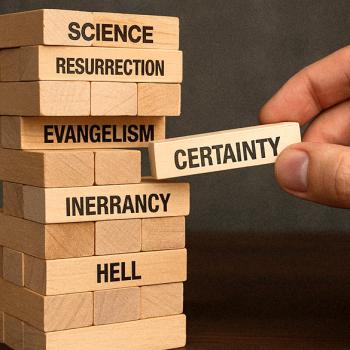John, however, adds editorially that Jesus "was speaking about the naos/temple of his body" (2:21), which the disciples only realized after the resurrection (2:22). In other words, Jesus apparently never explicitly taught that his body was the temple of God. Later in the New Testament the individual Christian, the Christian community, and Jesus himself are all described as being the temple/naos of God. Jesus was the temple of God because his body was the dwelling place for God on earth. Did Jesus-as-temple intend to replace, or supplement, the temple?
I will explore this idea further in the discussion of chapter four, but here we examine another question: was the messiah expected to (re)build the temple in first century Judaism? The answer is: it depends on whom you ask. In later Jewish tradition there developed a close connection between the Messiah and the rebuilding of the temple, but this came after the temple had been destroyed by the Romans in 70 CE. Nonetheless, a number of pre-70 CE traditions also pointed to Messiah as temple-builder, especially in the Dead Sea Scrolls. These ideas derived in part from an eschatological interpretation of 2 Samuel 7:13, where Nathan prophesied that the "son of David" would "build a house for my name." In its original context this referred to Solomon, but some exegetes in the first century felt that the Messiah—as the new Son of David—would likewise fulfill this prophecy. Furthermore, many Jews believed the temple would be destroyed during the messianic tribulations, and hence the Messiah would rebuild it. This is probably related to the description of the descent of New Jerusalem from heaven in Revelation 21. Thus the idea of Messiah as temple-builder would not have been unfamiliar to first-century Jews, though by no means all would have accepted the idea.
Bibliography of Recent books on John and the Temple
Coloe, M. God Dwells With Us: Temple Symbolism in the Fourth Gospel (2001)
Daise, M. Feasts in John (2007)
Fuglseth, K. Johannine Sectarianism in Perspective: A Sociological, Historical, and Comparative Analysis of Temple and Social Relationships in the Gospel of John, Philo, and Qumran (2005)
Hoskins, P. Jesus as the Fulfillment of the Temple in the Gospel of John (2006)
Kerr, A. The Temple of Jesus' Body: The Temple Theme in the Gospel of John (2002)
Perrin, N. Jesus the Temple (2010)
Sanders, E. Judaism: Practice and Belief, 63 BCE - 66 CE (1992), esp. pp. 45-189
Um, S. The Theme of Temple Christology in John's Gospel (2006)
A full version of this paper, with notes, can be found here.





